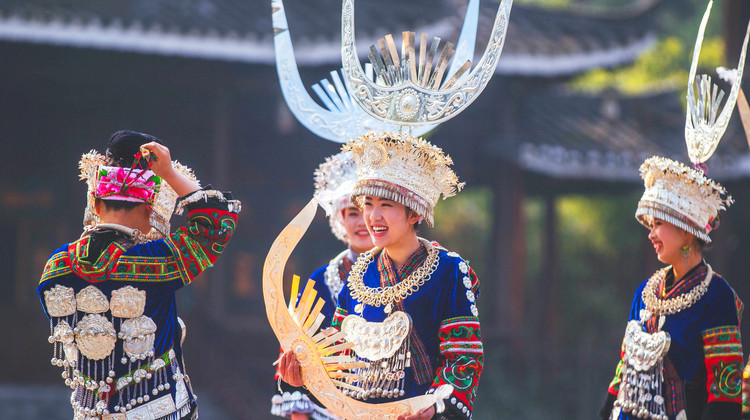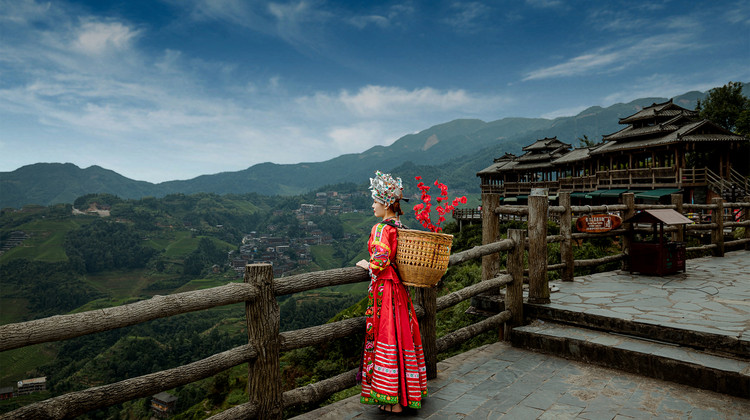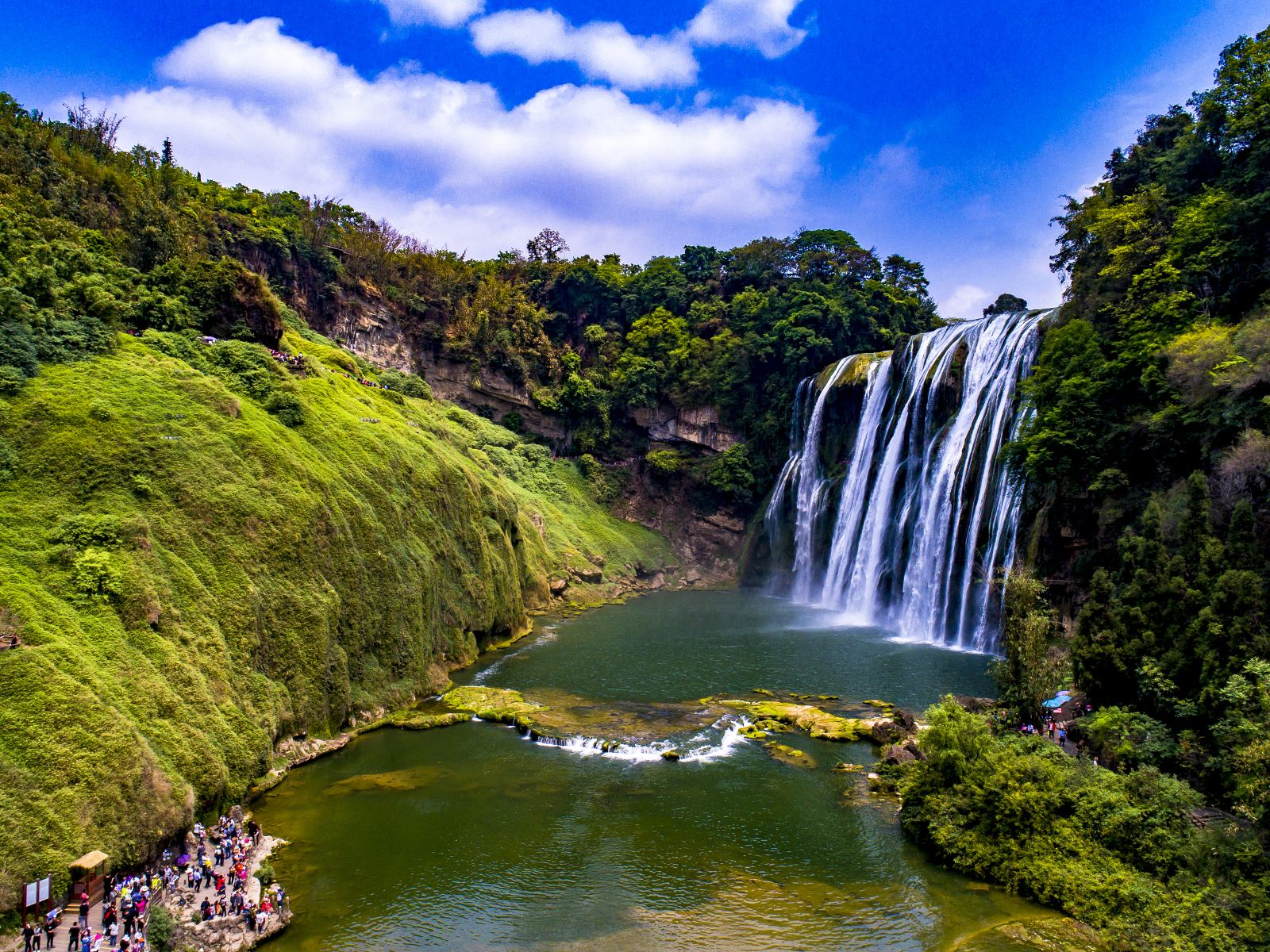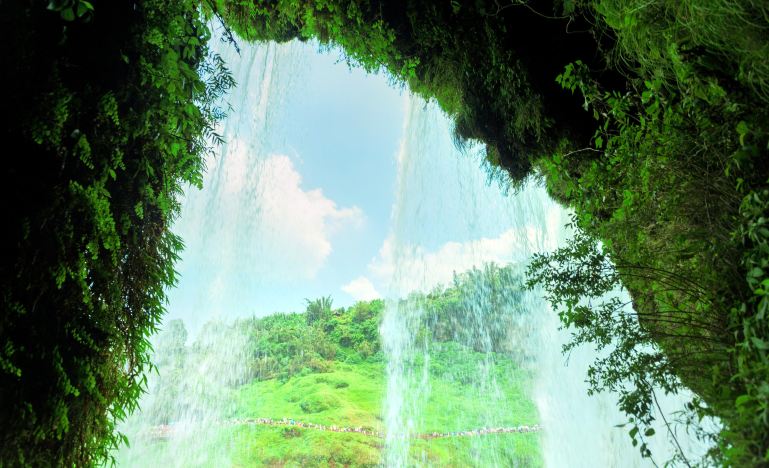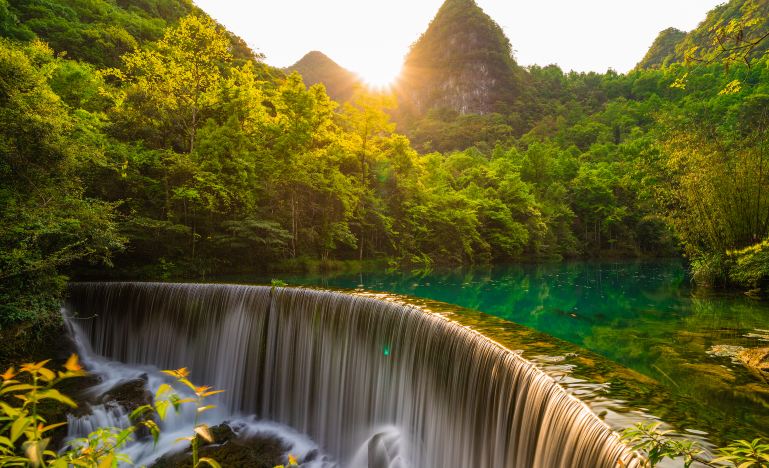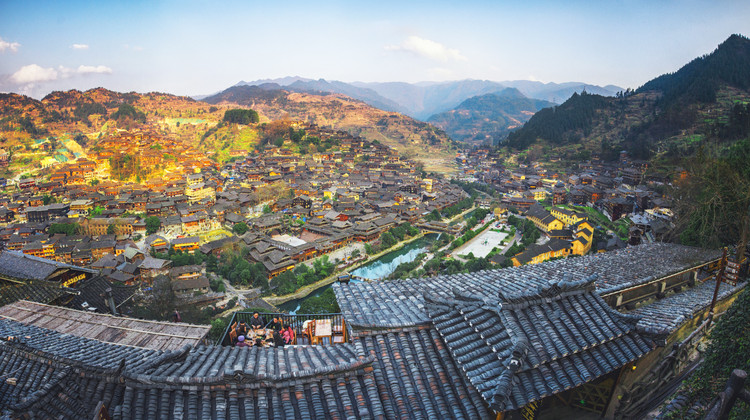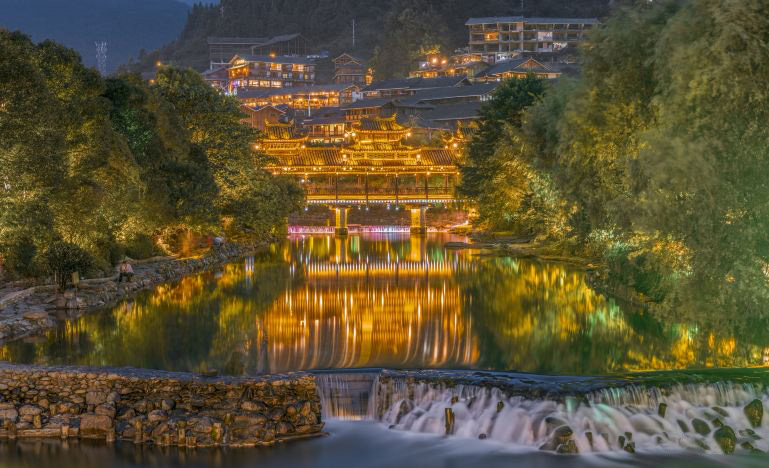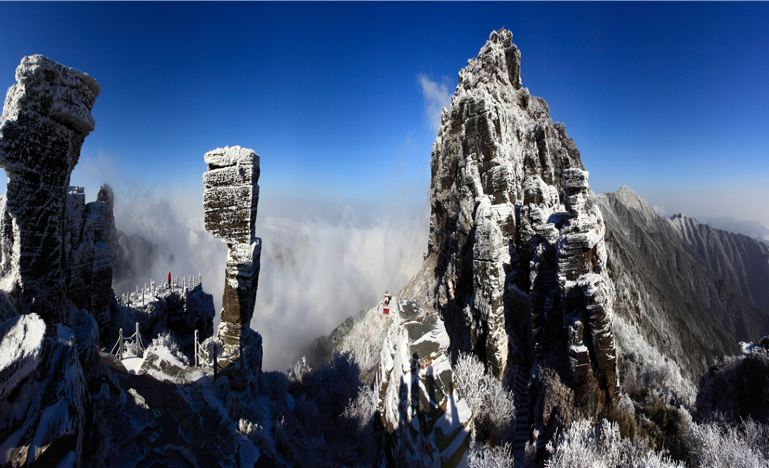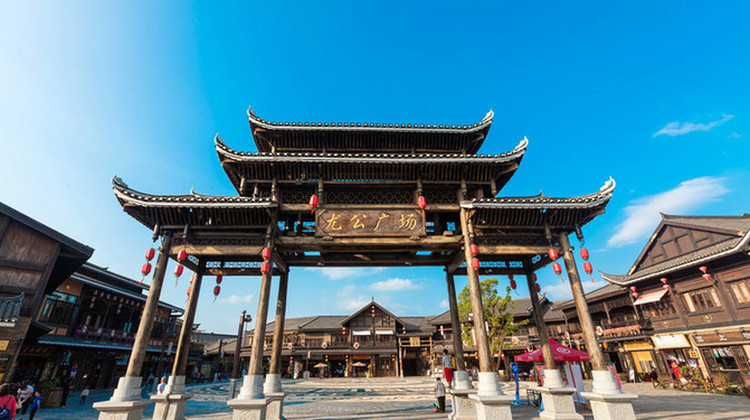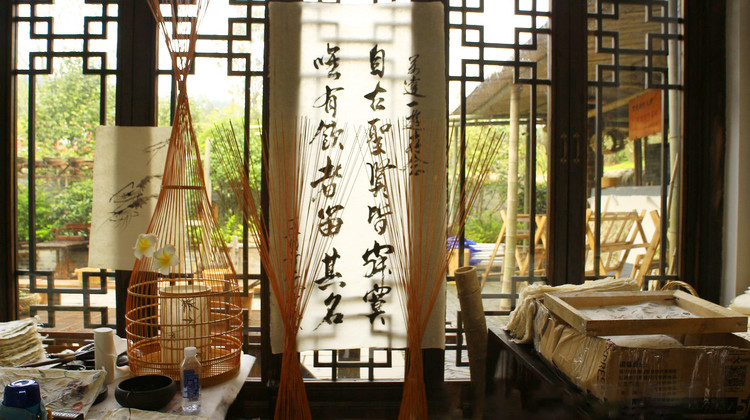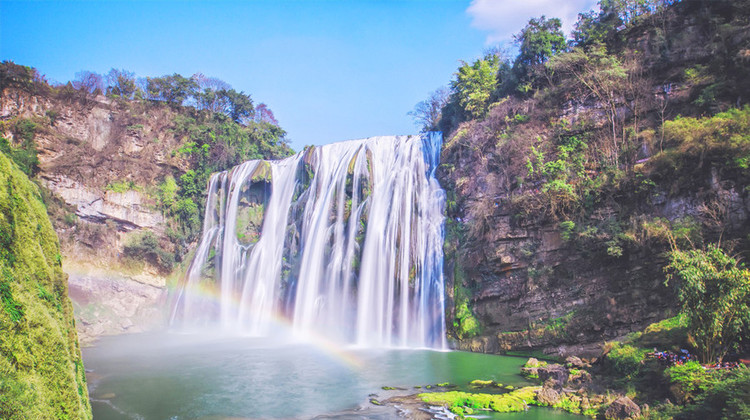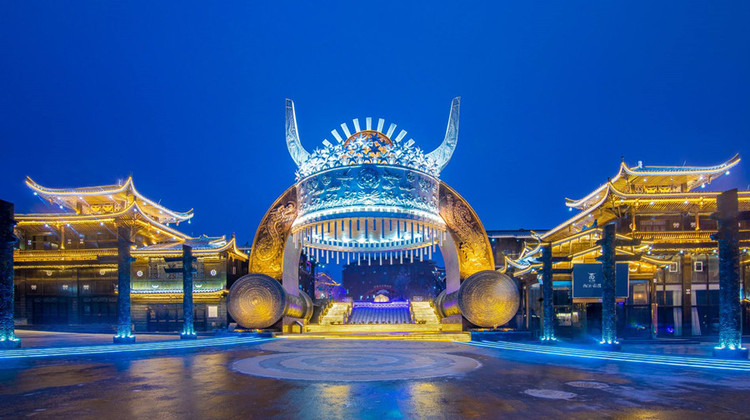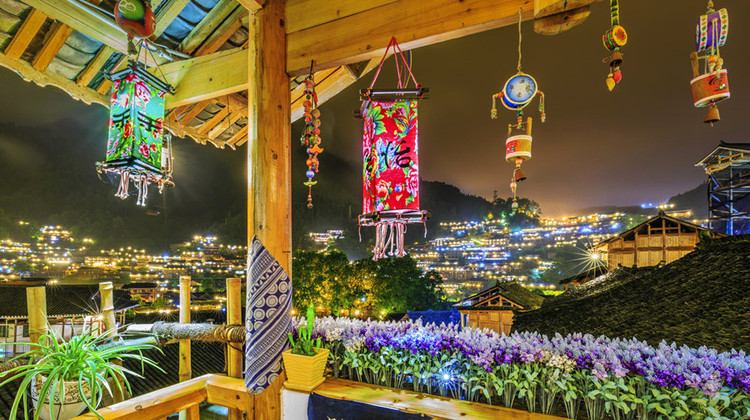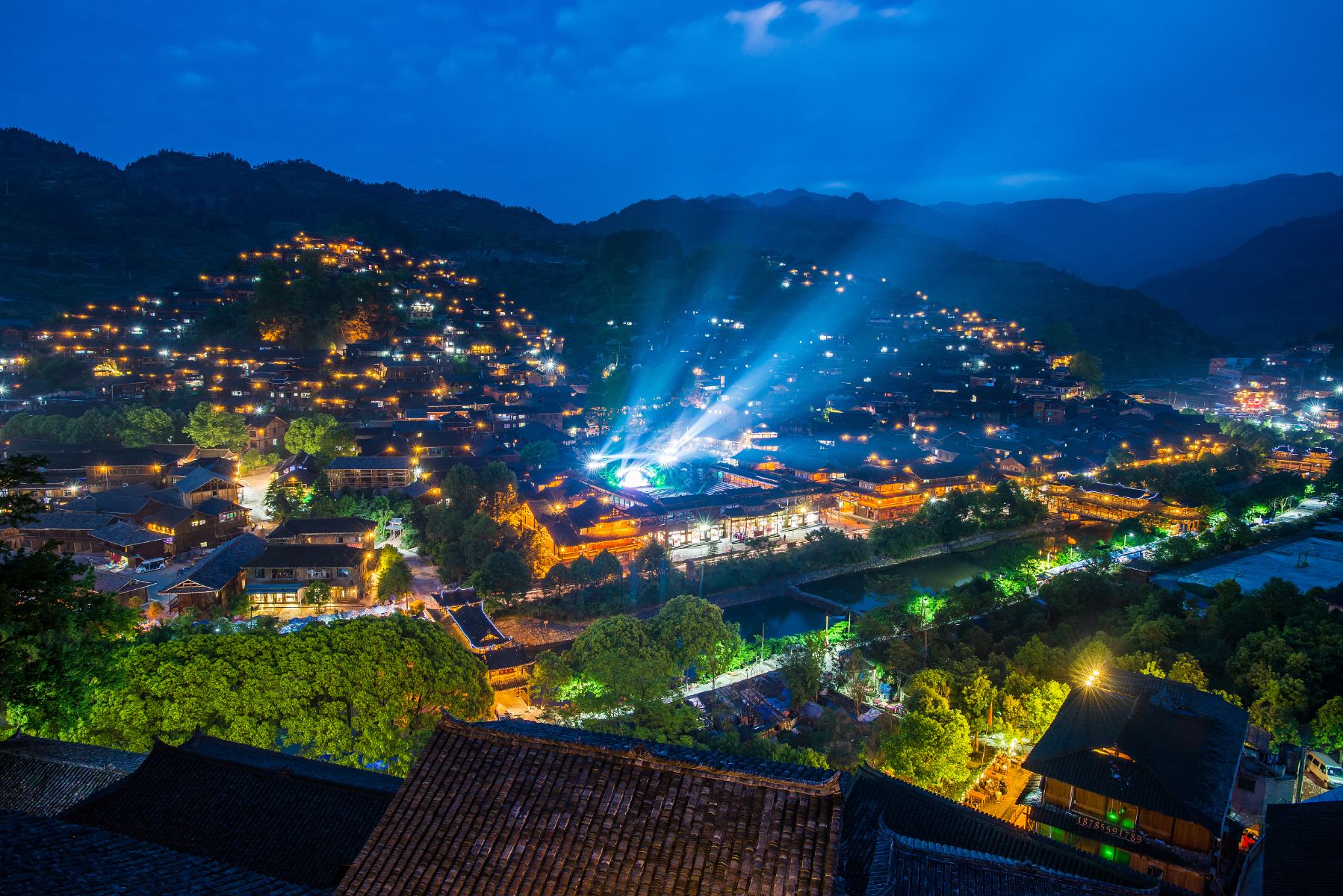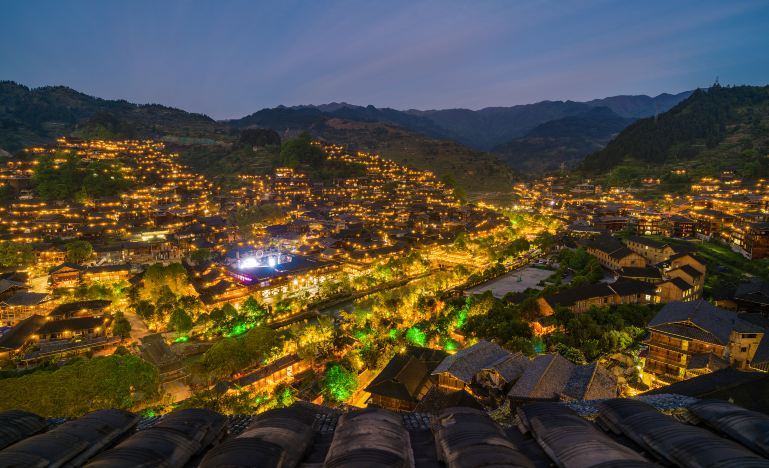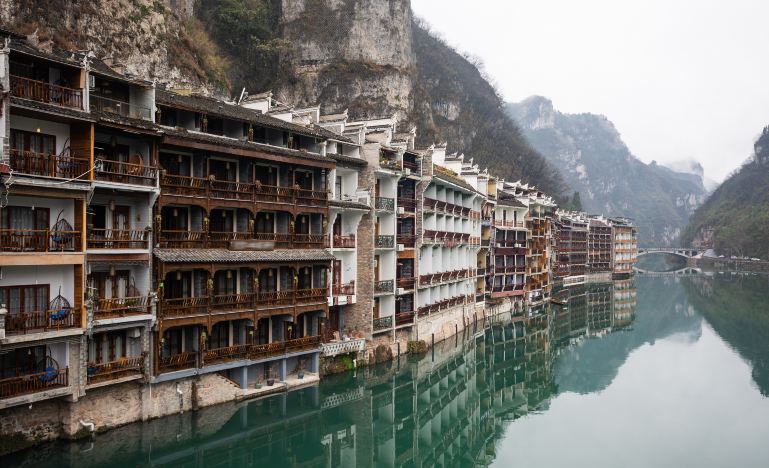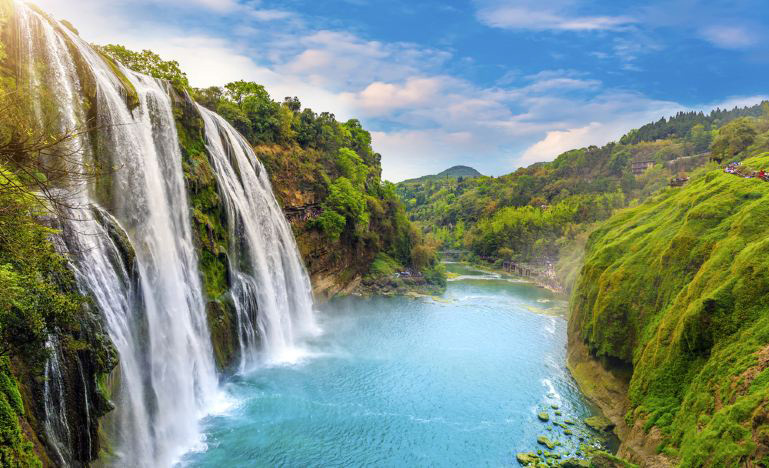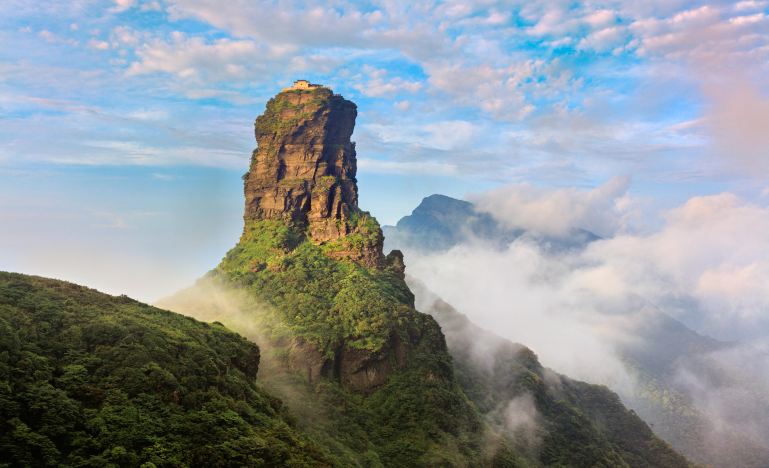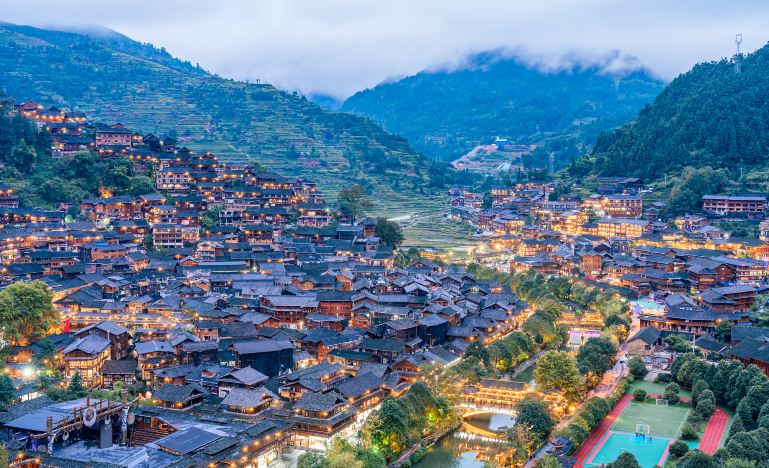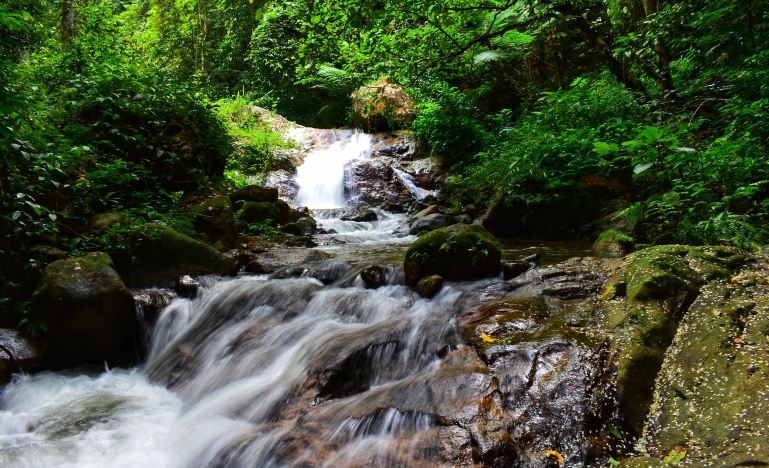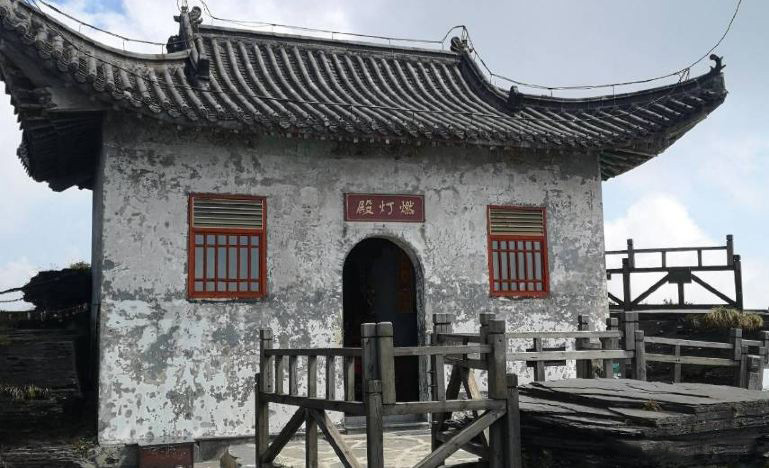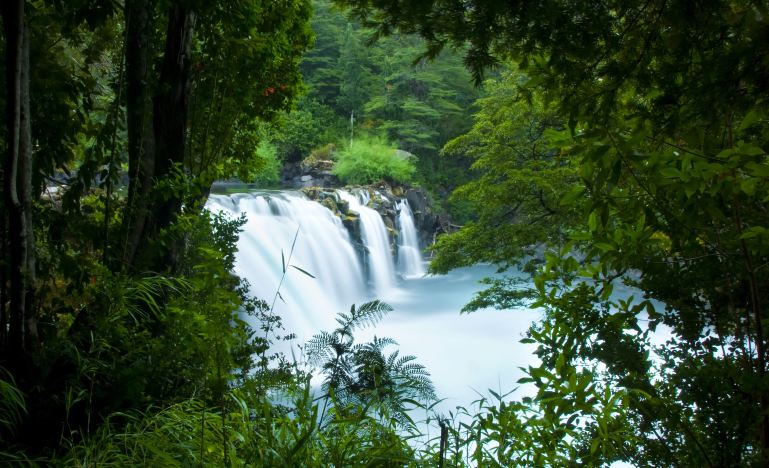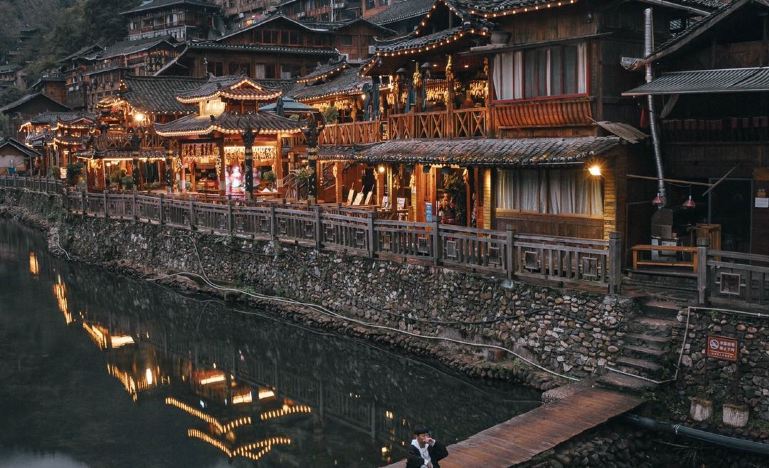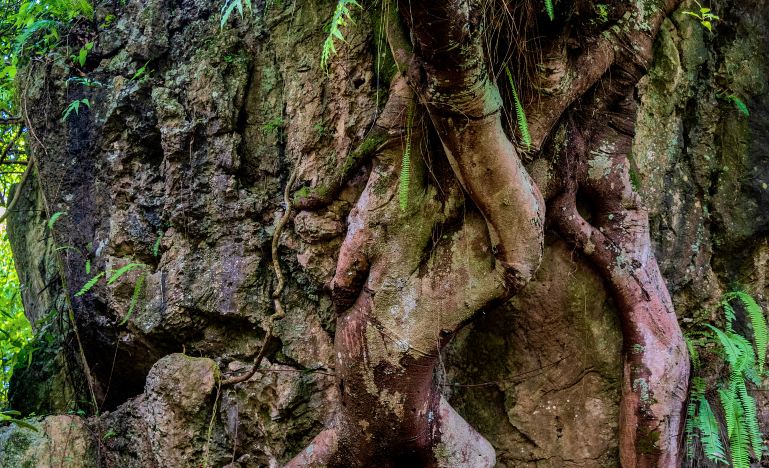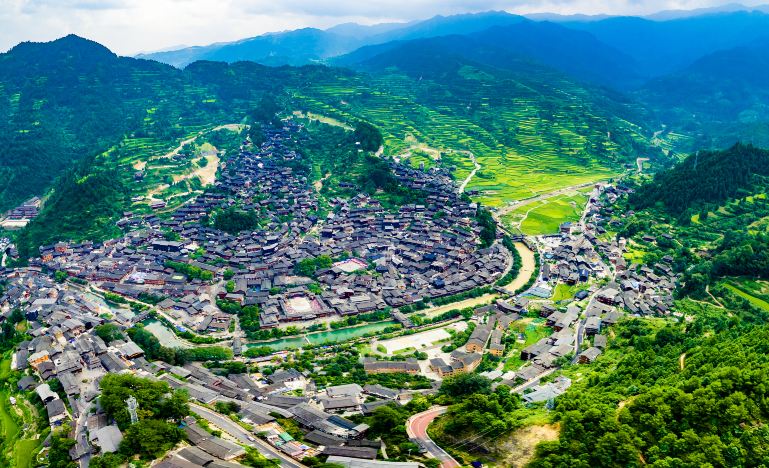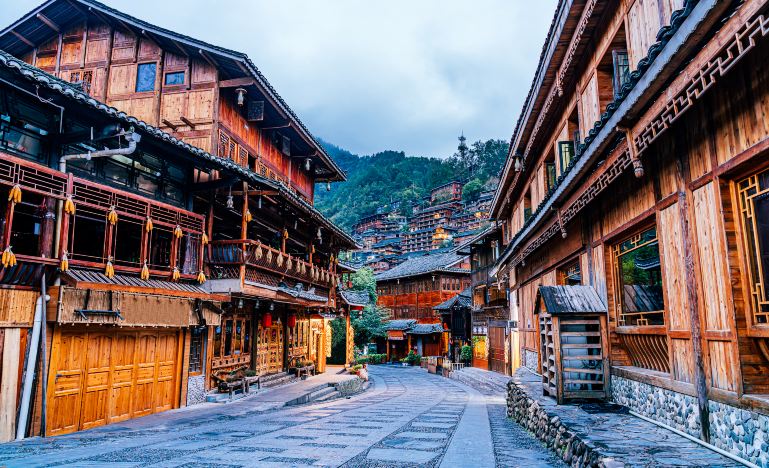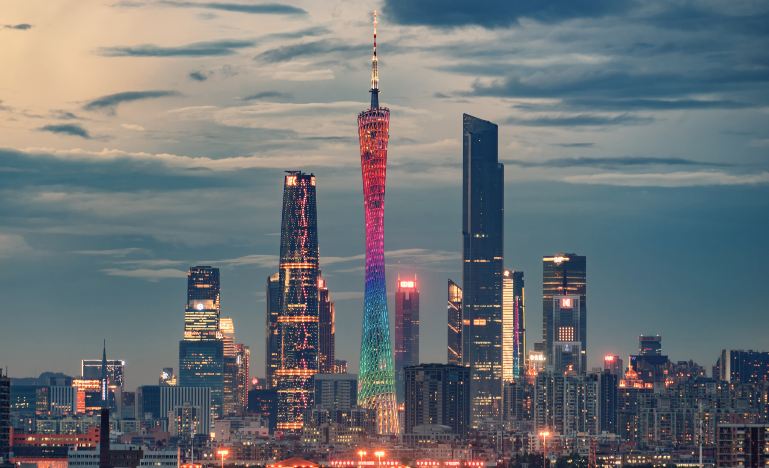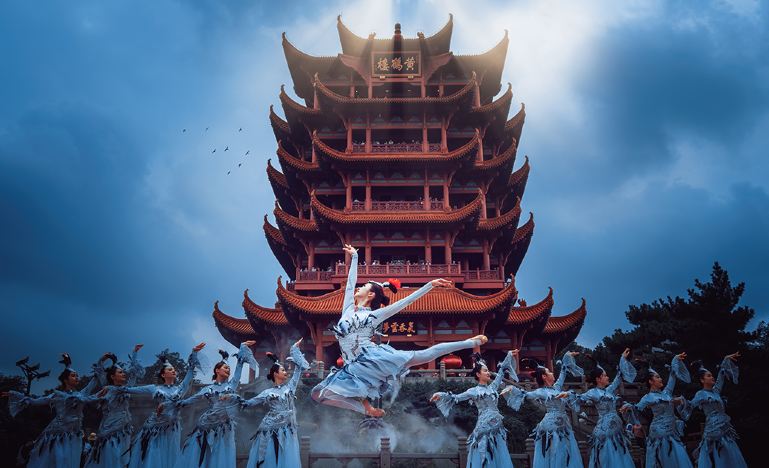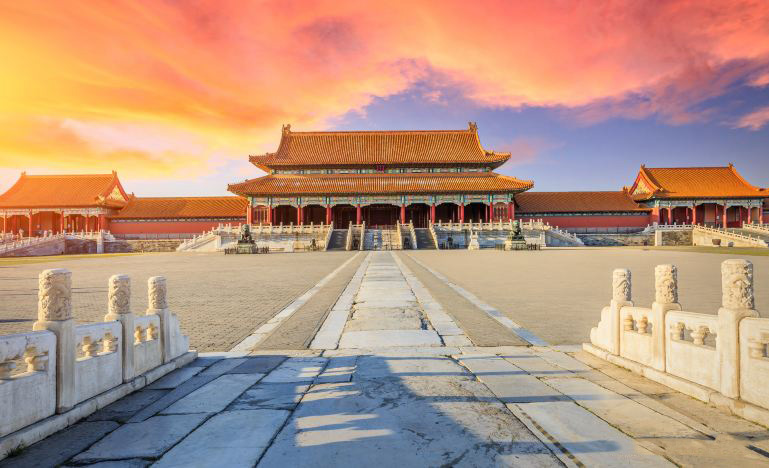Guiyang + Huangguoshu + Fanjing Mountain + Xijiang Qianhu Miao Village + Libo + Zhenyuan Ancient Town 6-Day 5-Night Trip
★ [Essential Guizhou Highlights] Huangguoshu + Libo Xiaoqikong + Fanjing Mountain + Xijiang Miao Village + Zhenyuan · Scenic Area Sightseeing Bus + Fanjing Mountain Cable Car.
Note:
- Guizhou is a place where ethnic minorities gather. Please be sure to abide by local folk culture.
- There are many mosquitoes in the landscape, so you can bring mosquito repellent spray
Itinerary
On the first day, with no itinerary planned, if you arrive early, you can indulge in local flavored snacks. In the evening, you can visit the Hua Guoyuan shopping center in Guiyang city area to experience the charm of the internet-famous city landmarks – the White House and the Twin Towers. Alternatively, you can head to the Nanming River or Zhonghua Road to experience the laid-back lifestyle and slow pace of this leisurely city. Experience the “sour and spicy” food culture of Guizhou’s snacks.
Guiyang Food Guide: Snack Streets:
- 27th Street: Hongtong City at Guiyang Railway Station
- Datong Street: Datong Food City, Yunyan District, near the Fountain
Night Markets:
- Qingyun Road: East Section of Qingyun Road, Nanming District
- Shaanxi Road: Shanxi Road, Yunyan District
Guiyang’s specialty dishes include:
- Spicy Chicken
- Huaxi Rice Noodles
- Changwang Noodles
- Sour Soup Fish
- Si Wa Wa (a type of Guizhou snack)
Huangguoshu Waterfall (simplified Chinese: 黄果树瀑布; traditional Chinese: 黃果樹瀑布; pinyin: Huáng Guǒshù Pùbù; Wade–Giles: Huang-kuo-shu p’u-pu; lit. ‘Yellow-Fruit Tree Waterfalls’), is one of the largest waterfalls in China and East Asia located on the Baishui River (白水河) in Anshun, Guizhou province. It is 77.8 m (255 ft) high and 101 m (331 ft) wide. The main waterfall is 67 m (220 ft) high and 83.3 m (273 ft) wide.
Known as the Huangguoshu Waterfall National Park, it is 45 km (28 mi) southwest of Anshun City. Together with minor waterfalls, the charms of the waterfall is a natural tourist draw, classified as a AAAAA scenic area by the China National Tourism Administration.
Huangguoshu Waterfall’s point of view changes depending on the location of the viewer. One viewing spot is Waterfall-Viewing Pavilion (Guan Bao ting), where the waterfall can be seen from a distance. Another is Water-Viewing Stage (Guan Bao Ting), where the waterfall can be seen from a bird’s-eye view. The third is Waterfall-Viewing Stage (Guan Bao Tai) in which visitors raise their heads to see the scene.
Libo County (simplified Chinese: 荔波县; traditional Chinese: 荔波縣; pinyin: Lìbō Xiàn) is a county of southern Guizhou province, China, bordering Guangxi to the south. It is under the administration of the Qiannan Buyei and Miao Autonomous Prefecture.
The county is located in the remote southeastern corner of the prefecture, on the border with Guangxi. Two local sites, Xiaoqikong (小七孔) and Dongduo (洞多), notable for their spectacular karst formations, form part of the multi-site South China Karst UNESCO World Heritage Site inscribed in 2007, which is an area about 550,000 km2 in extent.
Xijiang Qianhu Miao Village is located in Nangui Village, Xijiang Town, Leishan County, Qiandongnan Miao and Dong Autonomous Prefecture, Guizhou Province. It is 36 kilometers away from Leishan County, 33 kilometers from the prefecture capital, and approximately 280 kilometers from the provincial capital, Guiyang City. The village is composed of more than ten natural villages built along the mountains, surrounded by mountains, with overlapping ridges, and terraced fields that follow the terrain up to the sky. The Baishui River runs through the village, dividing Xijiang Miao Village into two parts.
Xijiang Qianhu Miao Village is known for its unique wooden stilted buildings built on the hillside, with thousands of such structures following the undulations of the terrain, creating a spectacular sight. The main attractions of Xijiang Qianhu Miao Village include the Xijiang Miao Museum, daily ecological song and dance performances in the scenic area, the homes of the Drum Tower Head and the Live Road Head, a brewing workshop, embroidery workshop, batik workshop, silver ornament workshop, viewing platform, Ga Ge Ancient Road, and the pastoral sightseeing area. Xijiang Qianhu Miao Village is an open-air museum, exhibiting an epic of Miao development and serving as a grandstand for viewing and studying Miao traditional culture.
In 1982, Xijiang Miao Village was listed by the People’s Government of Guizhou Province as a tourist attraction for ethnic customs on the eastern line of Guizhou. In 1992, Xijiang Qianhu Miao Village was designated as a provincial-level cultural relic protection unit in Guizhou Province. In 2005, the stilted buildings of Xijiang Qianhu Miao Village were included in the first batch of China’s national intangible cultural heritage list. In November 2020, Xijiang Qianhu Miao Village was announced as a China AAAAA-level tourist attraction.
The Fanjingshan (Chinese: 梵净山; pinyin: Fànjìngshān) or Mount Fanjing, located in Tongren, Guizhou province, is the highest peak of the Wuling Mountains in southeastern China, at an elevation of 2,570 m (8,430 ft). The Fanjingshan National Nature Reserve was established in 1978 and designated a UNESCO Biosphere Reserve in 1986. Fanjingshan is a sacred mountain in Chinese Buddhism, considered to be the bodhimaṇḍa of the Maitreya Buddha. It became a UNESCO World Heritage Site in 2018.
The mountain’s name “Fanjing” is an abbreviation of Fantian Jingtu (梵天净土), or “Brahma’s Pure Land”. Fantian is the Chinese name for the Buddhist heavenly king Brahmā, and Jingtu is Chinese for “pure land”, the focus of Pure Land Buddhism.
Guiyang is the capital of Guizhou province of the People’s Republic of China. It is located in the center of the province, situated on the east of the Yunnan–Guizhou Plateau, and on the north bank of the Nanming River, a branch of the Wu River. The city has an elevation of about 1,100 meters (3,600 ft). It has an area of 8,034 square kilometers (3,102 sq mi). At the 2020 census, its population was 5,987,018, out of whom 4,506,134 lived in the six urban districts.
A city with humid subtropical climate, Guiyang is surrounded by mountains and forest. The area, inhabited since at least the Spring and Autumn period, formally became the capital of the surrounding province in 1413, during the Yuan dynasty. The city is home to a large Miao and Bouyei ethnic minority population. Guiyang has a diversified economy, traditionally a center for aluminum production, phosphate mining, and optical instrument manufacturing. Following reforms, the majority of the city’s economic output in the services sector. Since 2015, it has seen targeted investments into big data and quickly emerged as a local innovation hub.
Guiyang is one of the top 500 science cities in the world by scientific research outputs, as tracked by the Nature Index.
FAQs
A: Depending on the season, wear comfortable clothing and shoes suitable for walking. For Fanjingshan, it might be cooler at higher altitudes, so bring a jacket.
A: Huangguoshu Waterfall is 77.8 m (255 ft) high and 101 m (331 ft) wide. The main waterfall is 67 m (220 ft) high and 83.3 m (273 ft) wide.
A:For 144hour-free-visa, you can refer this post 144-hour-Visa-Free Transit policies for Foreign Nationals – A Complete Guide in 2024 – ChinaTravelTips (china-travel-tips.com)

